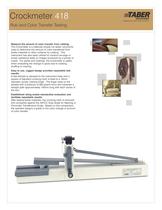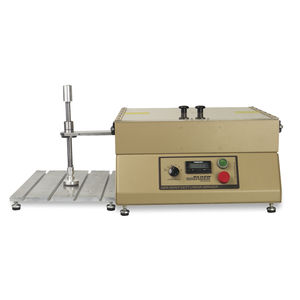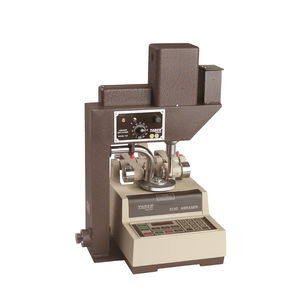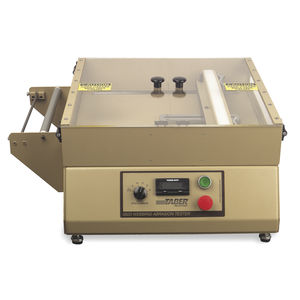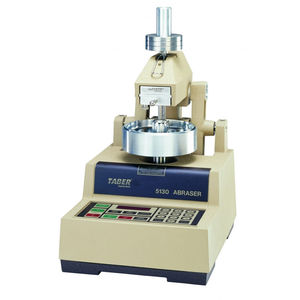
- Metrology - Laboratory
- Metrology and Test Equipment
- Crockmeter
- Taber Industries
Abrasion-resistance test device crockmeter 418

Add to favorites
Compare this product
Characteristics
- Options
- abrasion-resistance test device
Description
The Taber® Crockmeter - Model 418 provides a quick and accurate method to determine the amount of color transferred from textile materials (such as fabric, carpeting, yarn and leather) to other surfaces by rubbing. The Crockmeter has also been employed to perform rub abrasion, scuff and / or mar tests on flat specimens. Plus, it can be used to conduct smudge and smear resistance tests on images produced by a printer or copier. Regardless of specimen material, both wet and dry testing can be performed.
Description
Originally designed to simulate the action of a human finger and forearm, the Crockmeter uses a standard pressure and rubbing motion to provide reliable and reproducible test results. Specimens are positioned on the base of the Crockmeter and held in place with the sample holder. To prevent the specimen from shifting during testing, a sandpaper pad is provided to place under the specimen. A hand crank moves a reciprocating arm a distance of approximately 100mm. The rubbing action is provided by a 16mm diameter acrylic "finger" which moves back and forth in a straight line with each complete turn of the crank. The reciprocating load arm is weighted to provide a constant 9N load on the sample at all times and a mechanical counter keeps track of completed cycles.
A standardized crocking cloth is most often used as the abradant for textile applications. This square (or sometimes circular) cloth is wrapped around the acrylic crock "finger" and held in place with a wire spring clip.
Other abradants that might be used with the Crockmeter include felt, duck cloth, laboratory grade denim, coated abrasives (e.g. Polishing Paper, 281Q 3M WetorDry™), etc.
Catalogs
Crockmeter
2 Pages
Related Searches
- Test machine
- Material testing machine
- Automatic test machine
- Automatic test equipment
- Micrometer
- Manual test kit
- Mechanical test machine
- Manual test machine
- Torsion test machine
- Resistance test equipment
- Leather test machine
- Analog micrometer
- Precision test equipment
- Materials test equipment
- Abrasion and wear testing machine
- Abrasion tester
- Film test equipment
- Pipe test equipment
- Plastic test equipment
- Vertical test equipment
*Prices are pre-tax. They exclude delivery charges and customs duties and do not include additional charges for installation or activation options. Prices are indicative only and may vary by country, with changes to the cost of raw materials and exchange rates.


